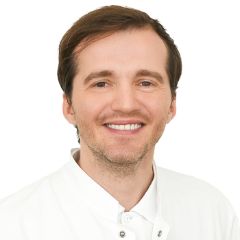
Gender variance
The Gender Variance Innovation Focus is the most comprehensive interdisciplinary and multidisciplinary treatment center for people with gender incongruence or gender dysphoria in Switzerland to date.
Gender dysphoria and gender incongruence are conditions that a person may experience when their different gender parts (gender identity, gender body, gender role, etc.) do not match.
As a rule, gender dysphoria and gender incongruence are perceived as unpleasant, which is why some people affected by them decide to transition in the course of their lives. Gender dysphoria and gender incongruence occur most frequently in trans and inter people, which is why our center specializes in these two specific groups of people seeking treatment.
Transition
For the Gender Variance Innovation Focus, the phenomenon of gender variance is one of the core qualities of being human.
In this sense, the Gender Variance Innovation Focus does not consider the presence of gender tension, which can lead to gender dysphoria and gender incongruence, to be a pathological process. Rather, the team focuses on reducing these tensions and thus improving the quality of life of those seeking treatment - and not on reproducing binary cisnormative gender concepts.
Quality of life encompasses physical, psychological and social aspects. Consequently, this can result in medical, psychotherapeutic and/or social transition steps.
Treatments/measures
With a few exceptions, the interventions described here meet the basic requirements for their costs to be covered by health insurance. At the same time, in specific situations it can happen that an insurance company refuses to cover the costs of a specific intervention. In such situations, the Gender Variance Innovation Focus team supports those seeking treatment in order to resolve these conflicts.
Non-surgical treatments
Particularly at the beginning of the medical transition, non-surgical treatments can lead to a reduction in gender tensions.
These measures can be divided into the following areas:
Hormone treatment
Feminizing measures
The use of estrogen in combination with testosterone blockers
a) suppress testosterone and its effect in the body and
b) the development of feminine body characteristics is initiated.
Regular, lifelong follow-up care by a team experienced in hormone treatment is required to check the hormone effect, avoid unwanted effects and adjust the hormone dose if necessary.
Masculinizing measures
The use of testosterone (and possibly the additional use of gonadotropin analogs) reduces
a) suppress oestrogen and its effect in the body and
b) the development of masculine body characteristics is initiated.
Regular, lifelong follow-up care by a team experienced in hormone treatment is required to check the hormone effect, avoid unwanted effects and adjust the hormone dose if necessary.
Reproductive medicine
Some medical treatments (e.g. hormone therapy, genital surgery) can have an impact on the fertility of the person seeking treatment. This is why questions relating to reproduction should be discussed at an early stage. The reproductive specialists in the team are happy to provide this advice.
Speech therapy
People who are uncomfortable with their own voice can benefit from speech therapy treatment. After a phoniatric voice analysis, the person seeking treatment is advised on voice training (and where this can take place).
Dermatology
In certain situations, permanent hair removal, particularly in the facial area, may be necessary despite successful hormone therapy. This therapy is offered in our specialized dermatology center.
Psychiatry and psychotherapy
If an additional psychological burden (e.g. depression, social anxiety, substance use) that could make transition more difficult is identified during the initial assessment, it may make sense to initiate accompanying psychiatric or psychological/psychotherapeutic treatment. This parallel treatment is generally recommended as an additional measure, which means that - unlike in the past - it does not cause any delays in the transition. Depending on the individual situation and needs, this treatment can be carried out at the Gender Variance Innovation Focus itself or close to where the person seeking treatment lives.
Surgical treatments
For many people seeking treatment, surgical transition measures are an important step towards achieving a good quality of life. The Gender Variance Innovation Focus has many years of experience in gender reassignment surgery. For the team at the Gender Variance Innovation Focus, a coordinated approach in a multidisciplinary team is a matter of course.
The surgical team includes experts from the fields of plastic surgery, urology, gynecology, ENT and oral and maxillofacial surgery. We distinguish between feminizing (=feminizing) and masculinizing (=masculinizing) treatments.
Feminizing operations
The formation of a female breast is usually achieved by inserting silicone implants. The most modern and safest implants in the world are used. The size of the implants is determined individually according to body proportions and individual wishes. Alternatively, breast reconstruction can also be performed using fat tissue transfer from the body's own fat. This technique usually requires 2-3 surgical sessions. Breast surgery can, but does not have to, be combined with other procedures.
In vaginoplasty, a modified penile inversion technique is used, whereby the erectile tissue and testicles are removed and a clitoris, labia minora and labia majora, a new urethral opening and a vagina are created in collaboration with the colleagues at the Department of Urology. Depending on the individual situation, individual steps can also be performed, e.g. removal of the testicles only (orchiectomy) or reconstruction of the external genitalia without forming a vagina (vulvoplasty).
Various procedures are available for facial feminization, such as nose correction (rhinoplasty), chin and jaw reduction, brow lift or hairline correction. The latter operations are sometimes performed in collaboration with oral and maxillofacial surgery. There are also minimally invasive options using hyaluronic acid fillers and fat tissue transfer to build up female facial contours, particularly in the lip and cheek area.
The reduction of the Adam's apple is achieved via a submental approach. Occasionally, the procedure can be combined with feminizing voice surgery.
If speech therapy has not been able to improve the patient's speaking voice, various surgical measures can be used. A precise assessment (voice analysis, computer tomogram of the larynx, size of the Adam's apple) and individual consultation are required in order to ultimately decide which surgical technique to use.
Masculinizing operations
The removal of the mammary gland (mastectomy) is necessary to create a male breast. The nipples are often reduced in size and moved outwards in order to achieve the most attractive appearance possible. Different techniques are possible depending on the individual situation.
The uterus and ovaries are removed in a minimally invasive procedure using laparoscopy (laparoscopy). These organs are removed via the vagina, which is closed at the upper end.
If penis formation (phalloplasty) is also desired later on, a combined removal of the vagina, uterus and ovaries is recommended. In this case, the vagina is first dissected from above using laparoscopy, then the rest of the vagina is removed from below (vaginal approach) and the vulva is closed.
If the uterus and ovaries have already been removed in a previous operation, the vagina can be removed directly through a vaginal approach. In this case, the vaginal tissue is removed and the vulva is then closed.
Various techniques are available worldwide for the formation of a penis (phalloplasty). The two most established techniques (radial flap phalloplasty and antero-lateral Tigh (ALT) flap phalloplasty) are among the standard procedures performed by our plastic surgery and urology team:
- Radialis flapplasty uses a piece of the forearm, with which both the penis and the urethra are formed in a single step.
- As this radial flap plasty leaves a large scar on the forearm and often also causes sensory disturbances, we offer a phalloplasty with tissue from the thigh (ALT flap plasty) as an alternative. This avoids a circular scar on the arm and the scar on the thigh is not visible when wearing shorts.
Regardless of the phalloplasty technique, a scrotum (scrotoplasty) and glans (coronoplasty) are also created. As a final step, penile implants (hydraulic or semi-rigid penis pump) and testicular implants (silicone) can be inserted depending on individual requirements.
Contouring procedures such as chin and lower jaw augmentation with repositioning osteotomies or implants and hyaluronic acid fillers are offered for the purpose of gender adjustment in the facial area. These procedures are sometimes carried out in collaboration with oral and maxillofacial surgery.
Transition support
At the Innovation Focus on Gender Variance, those seeking treatment have the advantage of being able to discuss their questions and concerns with an Advance Practice Nurse (APN) who specializes in this field.
Support before surgery
In view of the current medico-legal requirements, which demand "medical" confirmation of the diagnoses of gender dysphoria or In view of the current medical-legal requirements, which demand "medical confirmation" of the diagnoses of gender dysphoria or gender incongruence in order for the cost bearers to cover the medical gender reassignment services, the initial assessment carried out by the APN is initially aimed at recording the "gender biography" of those seeking treatment. An individual transition plan is also determined here on the basis of the reported gender dysphoria and gender incongruence-related problems on a shared decision making basis.
Finally, both the diagnosis and the plan are discussed and determined with the psychiatric head of the gender variance innovation focus in a joint meeting. The agreed referrals are then made to the other team members (e.g. dermatology, endocrinology, phoniatrics). Depending on individual needs, further follow-up appointments are arranged with the APN, during which the effectiveness of the measures introduced can be discussed and any corrections or additions initiated.
For some treatment seekers, the focus is more on the social aspects of transition (e.g. coming out in the family or at work), while other treatment seekers are mainly interested in medical issues (support in making decisions regarding measures, expectations of the surgical results). This helps to optimize the results of the transition. Experience has shown that the use of a coordination office massively shortens the communication channels within and outside the hospital, which improves the quality of and satisfaction with the various medical interventions.
Support during the surgical process
The APN is familiar with hospital procedures and works closely with the nursing team on the wards and with the team of doctors from the Gender Variance Innovation Focus. Individual questions and concerns can therefore be clarified before a planned hospital stay. Those seeking treatment are also accompanied and individually supported by the APN during their stay.
Support after surgery
Even after leaving hospital, the APN is available to answer questions in case of uncertainties and is integrated into the surgical follow-up treatment.
Procedure
In the medical transition, the innovation focus on gender variance is based on national and international treatment recommendations. The team focuses on individual, interprofessional and holistic advice and treatment for each person.
Procedure for requesting admission to the interdisciplinary treatment program
Admission to the treatment program is recommended for people who are at the beginning of their medical transition. After registration, the Gender Variance Innovation Focus team will contact the person seeking treatment to arrange an initial appointment.
A transition - and especially a medical one - can give rise to many questions, so it is important to identify your individual needs in an initial consultation. Only in this way is it possible for the team to accompany and support each person individually.
The initial examination is initially aimed at recording the "gender biography" and can sometimes extend over several sessions. Here, an individual transition plan is determined on a shared decision making basis based on the reported gender dysphoria and gender incongruence-related problems.
Procedure for requesting the initiation of surgical measures
This route is recommended for people who have already undergone medical transition steps (e.g. hormone treatment) and are interested in individual treatment options (e.g. surgical interventions). After receiving the application, the team checks whether the medical and administrative requirements (confirmation of gender dysphoria and gender incongruence diagnosis by a doctor, progress report from the hormone prescribing specialist) have been met.
Cooperations
The Gender Variance Innovation Focus works with various somatic(University Children's Hospital Basel)
and psychiatric clinics
- University Psychiatric Clinics Basel,
- Grisons Psychiatric Services,
- Psychiatrie Base lland (for children and adolescents)
- Psychiatry Base lland (for adults)
from the child and adolescent sector, but also from the adult sector.
The Gender Variance Innovation Focus is also involved in professional exchange at national, European and global level. We are also in close contact with community-based organizations and information services.
Research
Completed projects:
- ITES: Internalized transphobia - Experimental study
- Trans*Swiss: Satisfaction and quality of life of medically post-transitioned trans people
Student registration
Are you considering writing a (Bachelor's, Master's or PhD) thesis on the topic of "Gender Variance"? Then please write us an e-mail and leave us your main questions and concerns. We will get in touch with you soon.
Requirements
The Gender Variance Innovation Focus is committed to improving all aspects of the health of gender variant people. This includes their correct representation and perception in science, as this area in particular can quickly serve as a basis for stigmatizing this population group. In line with the recommendations of the WPATH, we assume that you will use gender-inclusive language in your work. In the case of (baccalaureate and specialist degree) interviews, it is also assumed that you have a basic knowledge of basic articles on the topic.
Registration of treatment seekers
Request professionals
The Gender Variance Innovation Focus team
Endocrinology team


Reproductive medicine team

Dr. Maddalena Masciocchi
Kaderärztin
Frauenklinik
Plastic surgery team
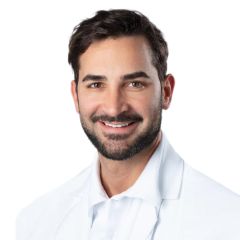
Dr. Alexander Lunger
Oberarzt
Plastische, Rekonstruktive, Ästhetische u.Handchirurgie

Dr. Nadia Menzi
Oberärztin
Plastische, Rekonstruktive, Ästhetische u.Handchirurgie
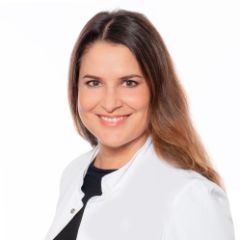
Dr. Barbara Mijuskovic
Kaderärztin
Plastische, Rekonstruktive, Ästhetische u.Handchirurgie
Urology team

Dr. Antje Feicke
Leitende Ärztin
Urologie

Dr. Nicole Ebinger Mundorff
Kaderärztin
Urologie
ENT team
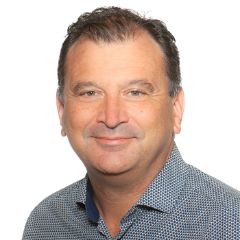
Prof. Claudio Storck
Leitender Arzt, Leiter Phoniatrie
HNO
Dermatology team

Dr. Roberta Vasconcelos
Oberärztin
Dermatologie
Gynecology team
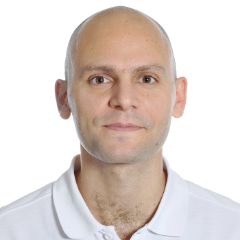
Dr. Tilemachos Kavvadias
Kaderarzt
Frauenklinik
Oral and maxillofacial surgery team

Prof. Dr. mult. Florian M. Thieringer, MHBA
Chefarzt
Mund-, Kiefer- und Gesichtschirurgie
Tel. +41 61 265 7344
Psychiatry and psychotherapy team

Dr. David Garcia Nuñez
Leiter Innovations-Focus Geschlechtervarianz
Plastische, Rekonstruktive, Ästhetische u.Handchirurgie

Andrea Scheidegger
M. Sc. Psychologin
Plastische, Rekonstruktive, Ästhetische u.Handchirurgie
Care team
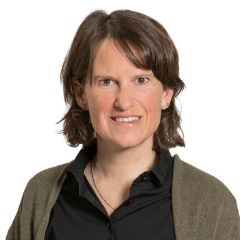
Nicole Brüll
APN Innovations-Focus Geschlechtervarianz
Plastische, Rekonstruktive, Ästhetische u.Handchirurgie
Tel. +41 61 32 86853

Janusch Labud
Stationsleitung
Chirurgie B4.6
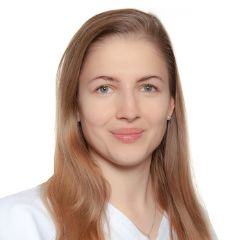
Claudia Hauser
Fachleitung Pflege APN
Chirurgie B4.6
Karin Müller-Wernli
Hauptverantwortliche Berufsbildnerin
Chirurgie B4.6
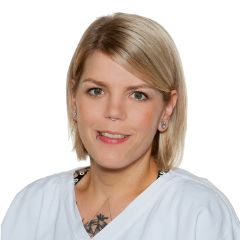
Tamara Stalder
Stv. Stationsleitung
Chirurgie B4.6
Research team

Dr. David Garcia Nuñez
Leiter Innovations-Focus Geschlechtervarianz
Plastische, Rekonstruktive, Ästhetische u.Handchirurgie
Team Administration
Jeannine Bühlmayer
adm.Mitarbeiterin Innovationfokus Geschlechtervarianz
Plastische, Rekonstruktive, Ästhetische u.Handchirurgie
News and literature on the innovation focus on gender variance
Press
Do you need specialist information on the subject of "Gender variance" for your article or research? Then please send us an e-mail and leave us your main questions and concerns. We will get in touch with you soon.
Requirements
The Gender Variance Innovation Focus is committed to improving all aspects of the health of gender variant people. This includes their correct representation and perception in science, as this area in particular can quickly serve as a basis for stigmatizing this population group. In line with WPATH recommendations, we require that articles in which the Gender Variant Innovation Focus is interviewed or contributes use gender-inclusive language.
General questions / Contact
Do you have any further questions or comments? Then send an e-mail to geschlechtervarianz@usb.ch
Videos
Video on the innovation focus on gender variance
Health today: Feminizing facial surgery

